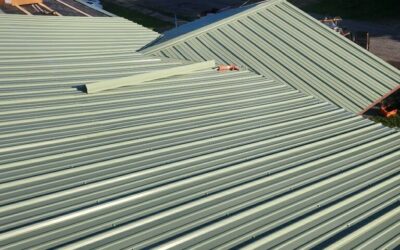Granule Roof : What Homeowners Need to Know
When it comes to protecting your home, the roof is your first line of defense against the elements. Most homeowners are familiar with asphalt shingles, which remain the most common roofing material across the United States. A big reason for their popularity is the protective layer of mineral granules that coat the shingle surface. This system is often referred to as a granule roof because the granules themselves play such an important role in roof performance, durability, and longevity.
In this comprehensive guide, we’ll explore what a granule roof is, why granules matter, what happens when they start to wear away, and how to maintain your roof so it lasts as long as possible.
What Is a Granule Roof?
A granule roof refers to asphalt shingles that have been coated with small, crushed mineral granules on their exposed surface. These granules are typically made of ceramic-coated minerals or crushed stone and are bonded to the asphalt mat of the shingle during the manufacturing process.
The granules serve several important purposes:
- UV Protection: Granules shield the asphalt layer from direct sun exposure.
- Durability: They protect the shingle surface from physical damage.
- Color and Aesthetic: Granules give shingles their wide range of colors and textures.
- Fire Resistance: Many granules are specially treated to improve fire resistance.
- Algae Resistance: Some shingles include copper or zinc-coated granules that help prevent algae growth.
Without granules, shingles would degrade much faster, fade in the sun, and be far less effective at protecting a home.
Why Are Granules Important for Asphalt Shingles?
Think of granules as the armor of your roof. Without them, the asphalt layer underneath is exposed to the sun, rain, hail, and wind. Here’s why they’re so important:
1. Protection From Sun Damage
The sun’s ultraviolet (UV) rays can cause asphalt to dry out and become brittle. Granules act like sunscreen for your roof.
2. Impact Resistance
When debris, hail, or branches hit your roof, the granules absorb much of the force, reducing damage to the underlying shingle.
3. Temperature Regulation
Granules can be designed to reflect sunlight, keeping attics and homes cooler. Energy-efficient granules are now part of many “cool roof” systems.
4. Aesthetic Appeal
Without granules, shingles would look like plain black asphalt sheets. Granules provide texture, depth, and color variety, which adds to curb appeal.
Granule Loss: A Common Granule Roof Problem
Over time, you may notice tiny sand-like particles collecting in your gutters or around your home’s foundation. This is known as granule loss, and it’s one of the most common issues with a granule roof.
Causes of Granule Loss
- Normal Aging: Shingles naturally lose granules as they weather over the years.
- Storm Damage: Hail, wind, and heavy rain can knock granules loose.
- Poor Installation: Incorrect nailing or mishandling can weaken shingle surfaces.
- Walking on the Roof: Foot traffic can wear away granules.
- Manufacturing Defects: Rare, but sometimes granules aren’t properly embedded.
Signs of Excessive Granule Loss
- Bald spots on shingles.
- Dark patches where asphalt is exposed.
- Accumulation of granules in gutters and downspouts.
- Shingles that look shiny or bare in sunlight.
If you see any of these signs, it’s a signal your granule roof may need repair or replacement.
How Long Does a Granule Roof Last?
The lifespan of a granule roof depends on factors like climate, maintenance, and shingle quality.
- 3-tab shingles: 15–20 years.
- Architectural shingles: 20–30 years.
- Premium shingles with advanced granules: 30–40 years.
Granules help extend shingle life, but once they begin to wear away significantly, the roof is vulnerable to leaks and deterioration.
When Should You Replace a Granule Roof?
If your shingles are losing granules at a rapid pace, it may be time for a replacement. Warning signs include:
- Large bald patches.
- Frequent leaks.
- Curling or cracking shingles.
- Granules filling gutters after every storm.
A professional roofer can inspect your roof to determine whether repairs are sufficient or if a full replacement is necessary.
Types of Granules Used in Asphalt Shingles
Not all granules are created equal. Modern manufacturers use different types of granules to enhance performance.
- Standard Mineral Granules – Provide color and UV protection.
- Algae-Resistant Granules – Contain copper or zinc to prevent black streaks.
- Reflective Granules – Designed for energy efficiency, reflecting sunlight.
- Ceramic-Coated Granules – Offer durability and fade resistance.
Knowing what type of granules your shingles use can help you choose the right roofing product for your home.
Advantages of a Granule Roof
Choosing asphalt shingles with protective granules has several benefits:
- Affordable compared to metal, slate, or tile.
- Wide variety of styles and colors.
- Easy to install and replace.
- Resistant to fire and algae when properly treated.
- Proven track record of durability.
Disadvantages of a Granule Roof
While granule roofs are popular, they’re not perfect:
- Granules wear off over time, reducing effectiveness.
- Susceptible to storm damage.
- Shorter lifespan compared to premium materials like metal or tile.
- Regular maintenance needed to check for granule loss.
How to Maintain a Granule Roof
Proper care can extend the life of your granule roof:
- Clean Gutters – Prevent clogging from granules and debris.
- Inspect Annually – Look for bald spots, missing shingles, and buildup.
- Limit Roof Walking – Reduce unnecessary foot traffic.
- Trim Overhanging Branches – Prevent abrasion and storm damage.
- Schedule Professional Inspections – Roofers can spot early signs of failure.
Cost of Replacing a Granule Roof
The cost of replacing a granule roof varies depending on materials and size.
- 3-tab shingles: $3.50–$5.50 per sq. ft.
- Architectural shingles: $5.50–$8.50 per sq. ft.
- Premium shingles: $8.50–$12.00 per sq. ft.
For an average 2,000 sq. ft. roof, expect $7,000–$16,000 depending on the type of granule shingles you choose.
Granule Roof vs. Other Roofing Options
| Feature | Granule Roof (Asphalt) | Metal Roof | Tile Roof | Slate Roof |
|---|---|---|---|---|
| Lifespan | 15–30 years | 40–70 years | 50–100 yrs | 75–200 yrs |
| Cost | Low | Medium | High | Very High |
| Maintenance | Moderate | Low | Low | Low |
| Aesthetic Variety | High | Medium | Medium | Low |
| Storm Resistance | Moderate | High | High | High |
While granule roofs are budget-friendly and attractive, they require more frequent replacement compared to premium options.
Common Misconceptions About Granule Roofs
Myth 1: Granule loss always means your roof is failing.
Truth: Some granule shedding is normal, especially in new shingles. Excessive loss is the real concern.
Myth 2: Dark-colored granules cause more heat inside your home.
Truth: Modern reflective granules help regulate temperature, even with darker shingles.
Myth 3: All asphalt shingles use the same granules.
Truth: Different shingle brands use specialized granules for algae resistance, color retention, and energy savings.
FAQs About Granule Roofs
How do I know if my roof’s granule loss is serious?
If you see bald patches or large amounts of granules in your gutters, it’s worth scheduling an inspection.
Can hail damage granules on shingles?
Yes. Hail can knock off granules and expose the asphalt beneath. This often leads to insurance claims.
Do new shingles lose granules?
Yes. Some shedding is normal during the first year as loose granules wash away.
Will a granule roof add value to my home?
Yes. A new, well-installed asphalt shingle roof enhances curb appeal and provides peace of mind for buyers.
Can granule roofs be repaired instead of replaced?
Small areas of damage can be repaired, but widespread granule loss typically requires replacement.
Final Thoughts
A granule roof is one of the most common, cost-effective, and visually appealing roofing systems in the world. The mineral granules that protect asphalt shingles are small but powerful, shielding your home from UV rays, rain, hail, and fire while adding color and texture.
Over time, however, granule loss is inevitable. By understanding how granules work, what causes them to wear away, and how to properly maintain your roof, you can extend the lifespan of your shingles and avoid costly damage.
If you notice bald spots, dark patches, or a buildup of granules in your gutters, don’t wait until leaks start — schedule a professional roof inspection. With the right maintenance and timely replacement, your granule roof will continue to protect your home for decades.440-235-3124
 (440) 307-2060
(440) 307-2060

